The HTC One X for AT&T Review
by Brian Klug on May 1, 2012 6:00 PM EST- Posted in
- Smartphones
- Snapdragon
- HTC
- Qualcomm
- MSM8960
- Krait
- Mobile
- Tegra 3
- HTC One
- NVIDIA
The next major thing to talk about it HTC’s Sense 4. First off, all of the HTC Ones run Android 4.0.3 as of this writing, which was the first ICS build pushed to the android open source project. It isn’t 4.0.4, but that’s forgivable considering the timeframe involved. Anyhow, Sense is one of those things that traditionally has been a major point of contention for power users. The problem for an OEM crafting a theme or skin is to strike a balance between the native appearance and feel of the underlying base OS, and whatever unique customizations they’re adding.
For probably the first time, I can honestly say I think HTC has has nailed that balance with Sense 4. The platform still feels and looks ICSey, and I think that’s what made previous iterations of Sense somewhat awkward - you couldn’t adequately grasp the theme or feeling of the underlying OS. HTC has changed things like overscrolling behavior throughout the OS, as elements now spread apart like an accordion. Toggle switches and buttons also get a new theme, but it isn’t an altogether huge departure from ICS, and (as required) Holo is still lurking underneath for applications that leverage it.
Like previous iterations, Sense 4 includes a number of lock screen customizations, including the ability to launch applications or SMSes by dragging their shortcuts into the ring. Unlike the previous version, you don’t get the ability to change the lock screen shortcuts directly, instead they’re inherited from the bottom dock-like row of applications on the launcher. The launcher now includes ICS features like folders on the homescreen for organizing shortcuts, and a new widget, app, and shortcut management view.
The main launcher gives you a paginated 5x4 grid of application tiles. HTC has done similar things in the past with the bottom three tabs - all, frequent (sorted by number of launches), and new downloaded applications. There’s not much to say here other than it’s interesting how most stock launchers have returned to paginated structure instead of just a big scrollable list view. Both the launcher and main homescreens are very very smooth, thanks to the combination of ICS’s OpenGL ES 2.0 2D acceleration and MSM8960.
The other main Sense customizations include both messaging, keyboard, and the task switcher. HTC has opted to change the task switcher entirely; instead of ICS’s transparent column of recently launched applications, the HTC Sense 4 launcher is a row of full screen previews. Applications can be closed by swiping them up (hello WebOS cards…) or switched between by tapping on them.
Messaging has changed subtly since the previous version of Sense, and feels snappier. One of my complaints with Android in general has been how messaging seems to always slow down after a few weeks worth of SMSes accumulate, and so far I haven’t run into that wall. I still do think the compose box is too big and covers too much of the conversation, and the default font seems gigantic, but thankfully one can change that. The Sense 4 keyboard also feels improved, and I can type at full speed without issue. That said, I’ll never understand why OEMs continue to remove the stock keyboard entirely.
Another major design decision HTC has made is to go with the traditional USB disk drive mount option instead of MTP. I think we’ll see OEMs also go this route as the MTP connector on some platforms still leaves a lot to be desired. Sense 4 also leaves the notification shade virtually untouched - there aren’t any quick power settings or tabs, just the settings pane shortcut like stock ICS. All in all I feel like this is the new Sense 4 design language - minimalist and simple, not the self-justifying customization of every last window and view just for the sake of doing so.
Storage on the AT&T One X is 16 GB of integrated NAND. Like basically all Android phones, this is divided between an /sdcard mount point, and /data. Note that this architecture is basically required if you’re going to implement USB mass storage instead of using MTP.
shell@android:/ $ dfFilesystem Size Used Free Blksize/dev 335M 136K 335M 4096/system 1007M 895M 112M 4096/data 2G 696M 1G 4096/cache 251M 4M 247M 4096/devlog 19M 16M 3M 4096/mnt/asec 335M 0K 335M 4096/mnt/obb 335M 0K 335M 4096/firmware_radio 199M 33M 166M 4096/firmware_q6 199M 5M 193M 4096/firmware_wcnss 4M 1M 3M 2048/data/secure/data 335M 0K 335M 4096/data/DxDrm/fuse: Permission denied/mnt/sdcard 9G 1G 8G 32768
So you get 9 GB of storage for media and photos, and 2 GB for applications, which is pretty much the normal storage split I see. Like we discussed in our initial ICS piece, you can either get unified storage with MTP, or the less cumbersome mass storage mount method.
The last note is Beats Audio. HTC includes the Beats branding almost everywhere - it’s on the box, on the back of the device, on the boot splash images, and inside the OS. There’s no longer any Beats earbuds in the box, but a corresponding change in the way Beats works. The new change is that Beats now works for any headphones that you attach, instead of just Beats branded ones like previously. At some point I’m going to investigate Beats Audio integration in newer HTC devices more thoroughly, for now just know that new HTC devices give you the Beats DSP on any attached headphones. I will note that it sounds to me just like the Beats audio from the HP TouchPad, which is to say boosted bass and some dynamic range compression. I honestly prefer it off, but overall sound quality with it off is subjectively good - no background hiss or whine audible.
The rest of Sense is hardware related and involves another important consolidation - camera, which we’ll get into in the respective section.


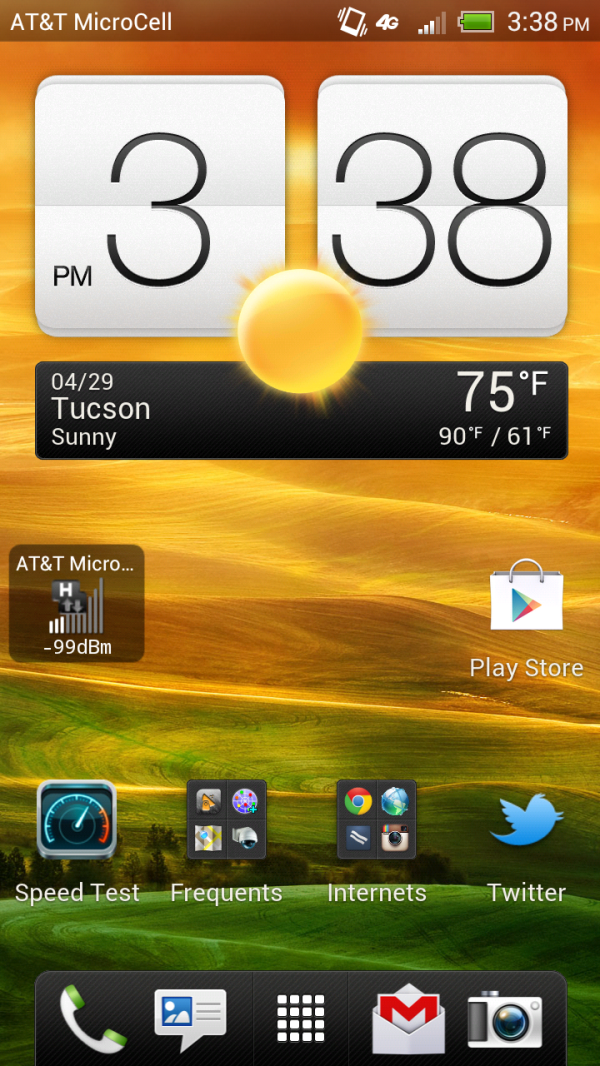
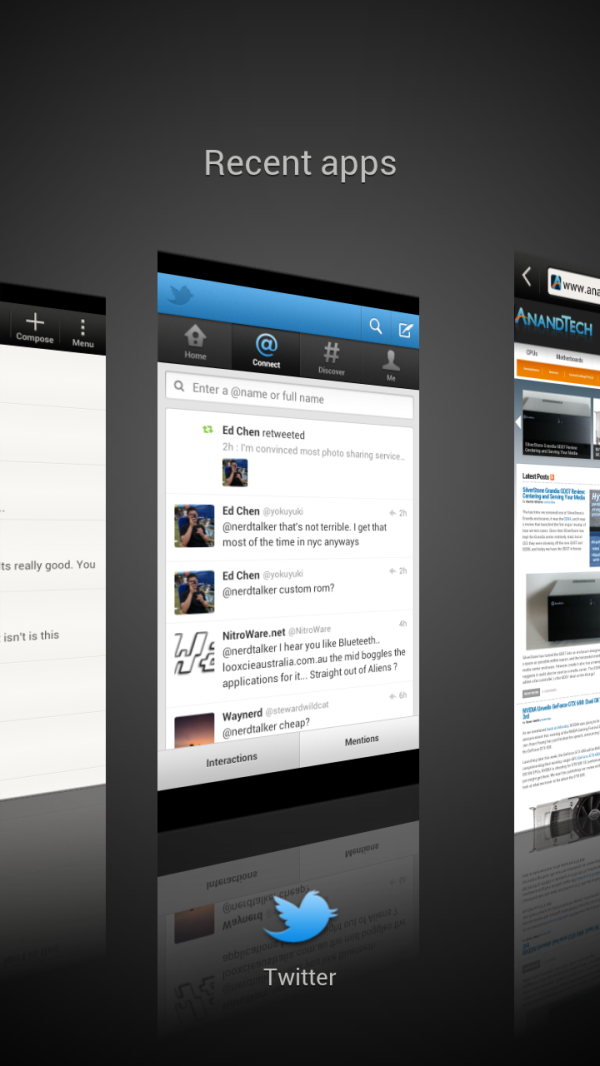
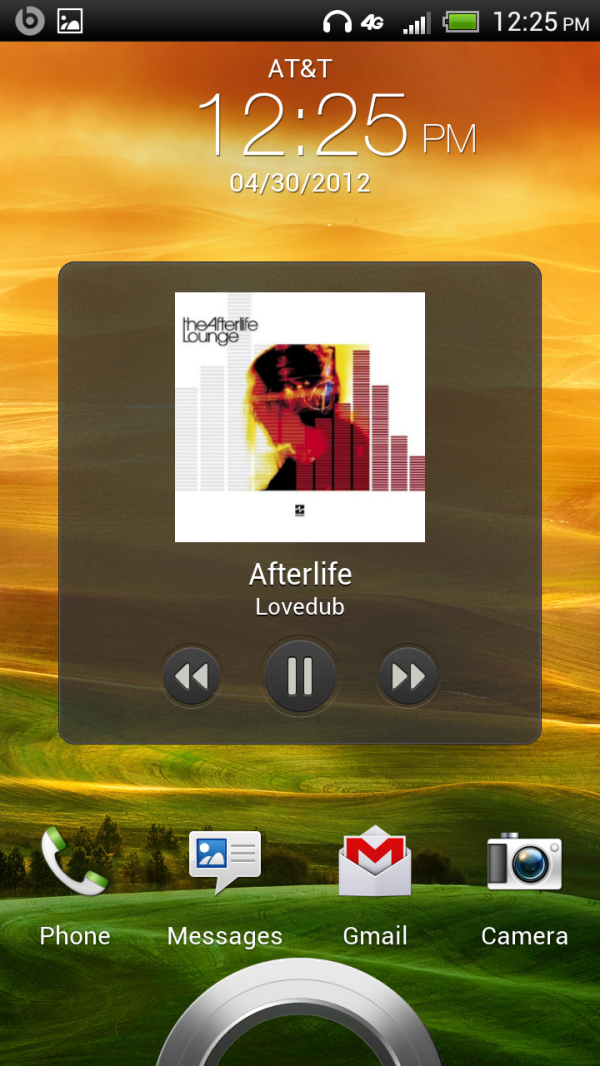
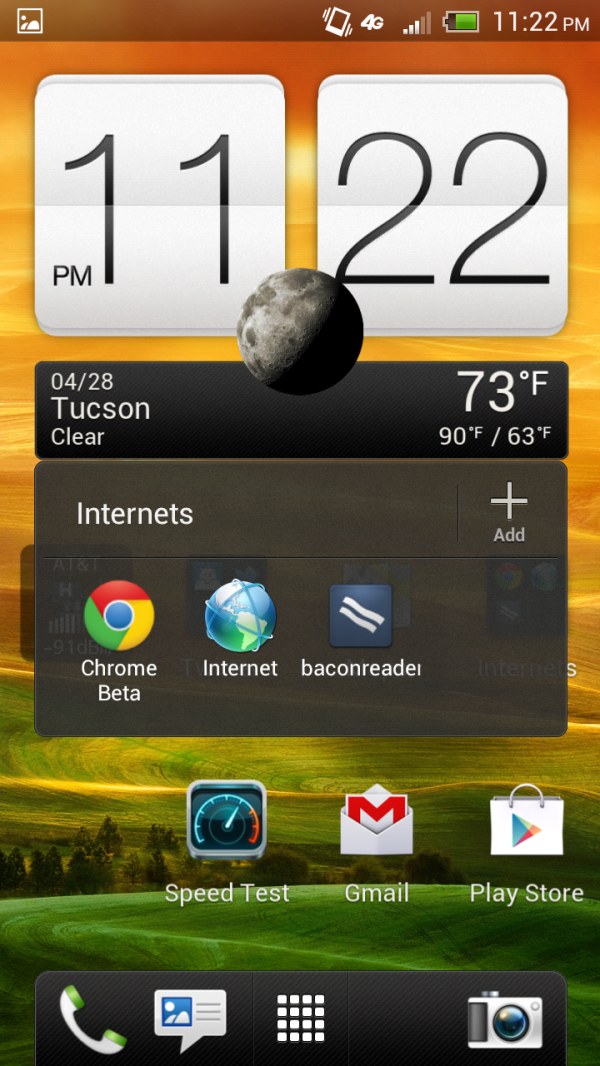
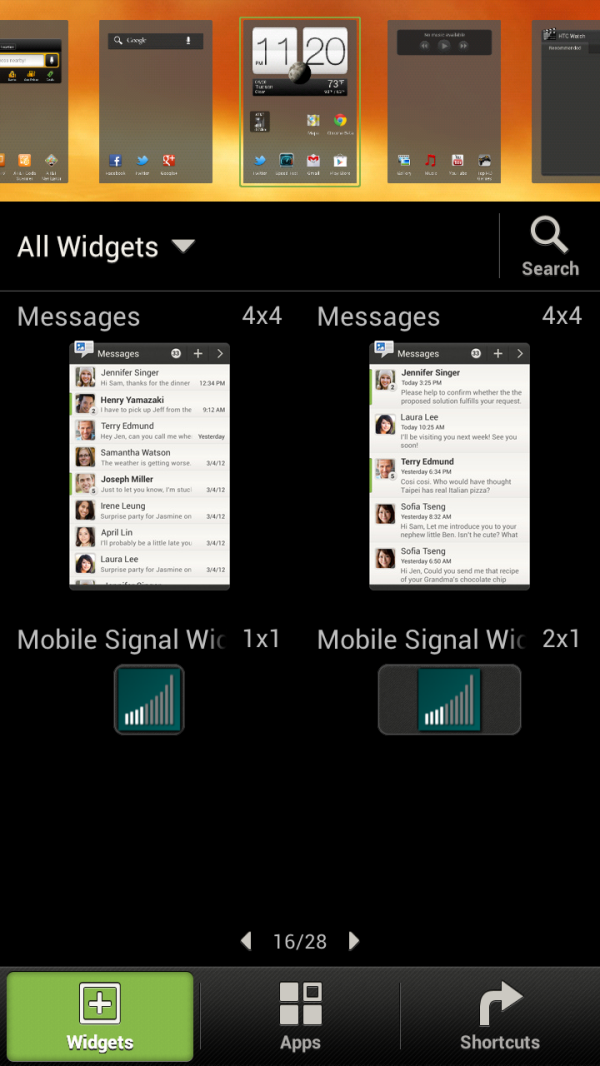

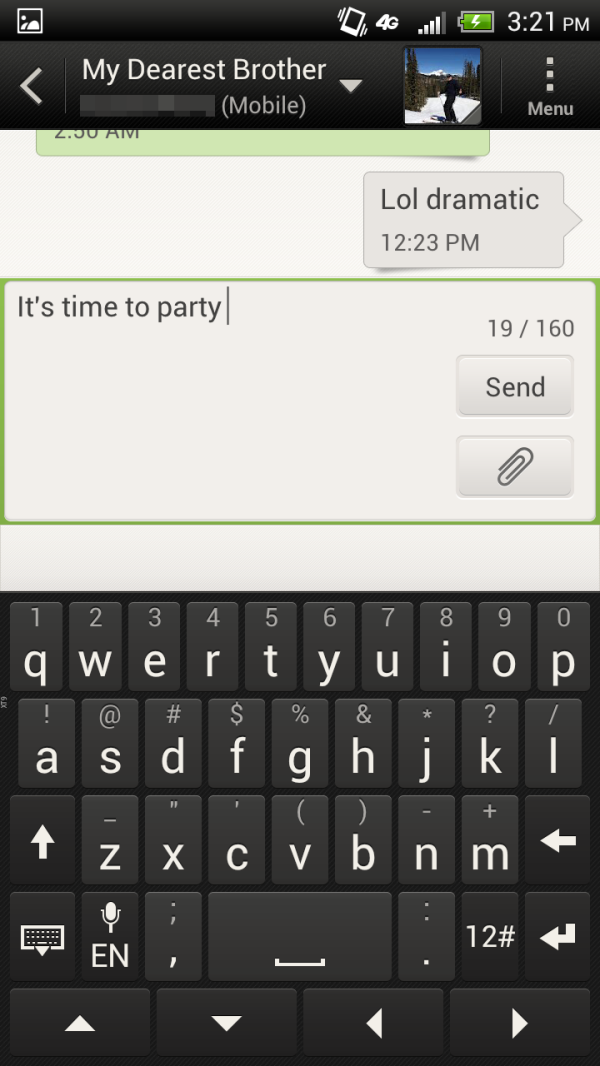
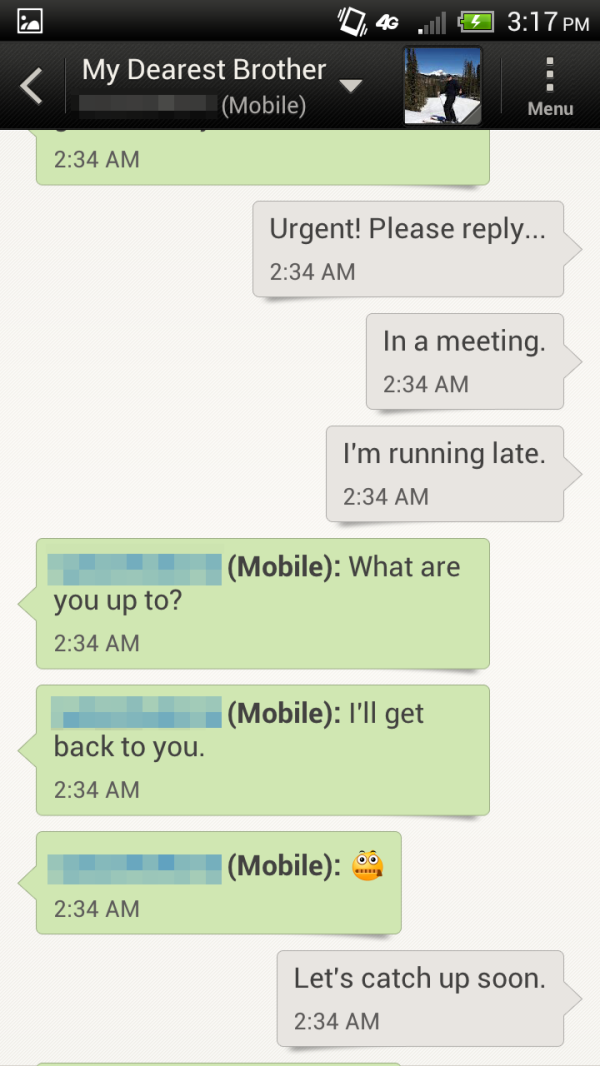

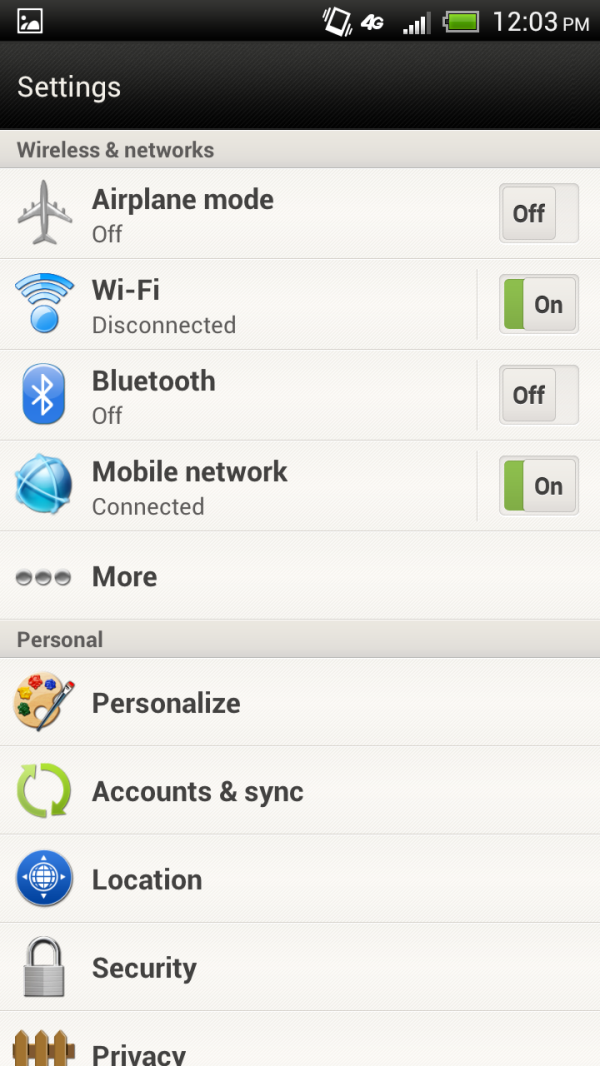
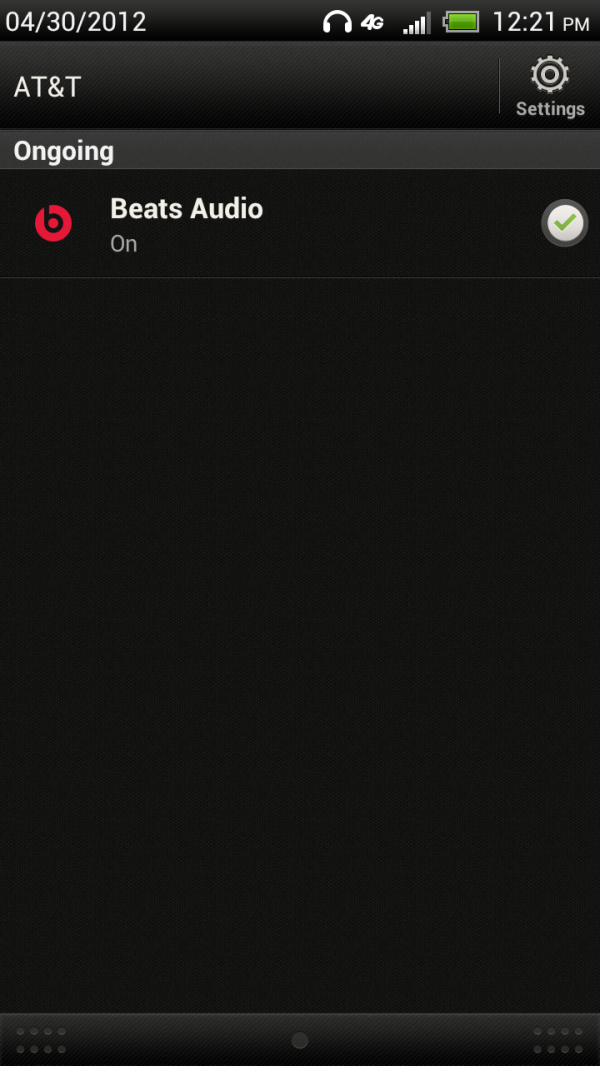








137 Comments
View All Comments
RussianSensation - Wednesday, May 2, 2012 - link
You know that HTC One is for pre-order still too?http://www.wireless.att.com/cell-phone-service/cel...
Well if you need a phone right away, then sure get the HTC One. Considering most of us keep our phones for 2 years, I'll wait a month if it means getting a better phone. Can't go wrong with HTC One.
NeoteriX - Wednesday, May 2, 2012 - link
"It's premature to recommend a next generation smartphone without testing the S3, at the very least."That's a pretty silly statement. There's always a "next best thing" on the horizon. Shall we keep delaying a recommendation waiting for the next generation device? The Galaxy S3 is going to be *announced* in a few days, which says nothing of it's actual release, internationally or in the US.
In other words, it could be several months before Anand or Brian get their hands on a US S3. Consumers need to make purchasing decisions now. If you want to wait and hope that the S3 may be better, that's your prerogative, but it certainly shouldn't be AnandTech's.
RussianSensation - Wednesday, May 2, 2012 - link
That's a pretty silly statement. There's always a "next best thing" on the horizon. Shall we keep delaying a recommendation waiting for the next generation device?Umm...it's one thing when that something new is launching in 3-4 months from now. Samsung S3 is launching this week......
Do you keep a device for 2 years? If so, what's waiting another 1-2 weeks to see how it does? If you don't care sure. HTC One already has poor audio quality which is a big factor for us who listen to music on our phones. That alone is a deal breaker for me.
metafor - Wednesday, May 2, 2012 - link
I will wait for the announcement before picking. But if it's anything like the Galaxy S2, a US buyer like myself will have to wait until October to get it :(I'm currently trial-testing a One S. I'll be choosing between that, the One X or GS3 when I can get my hands on all 3.
Skiddywinks - Wednesday, May 2, 2012 - link
I think you are missing something pretty big here.The S3 was meant to be announced months ago, and the reason it was pushed back was because Sammy didn't want to do the typical where they announce a phone, and then can't actually sell any for months.
I think the S3 will be in consumer's hands a hell of a lot quicker. Hell, there are already pictures of inventory screens with them.
metafor - Thursday, May 3, 2012 - link
Consumers in the U.S. The S2 was announced, then available for international customers within IIRC 2 months or so. That's perfectly reasonable and expected.It then took godfarking forever for it to come to the U.S. carriers. Verizon never carried it, ever.
What makes you think Samsung is delaying the announcement for the sole reason of a U.S. market launch?
dagamer34 - Thursday, May 3, 2012 - link
Samsung has already stated that they want to announce their phones closer to their actual launch date. It's silly that the Galaxy S II was announced in Feb 2011 and didn't get sold in the US for another 7 months! And with the HTC One X already available, they can't sit on this phone for 2 months.ol1bit - Wednesday, May 2, 2012 - link
I remember it took almost 9 months for the S2 to make it to America. I doubt the S3 will be any better.This HTC rocks, and I'm bet will be way better than the S3.
Skiddywinks - Wednesday, May 2, 2012 - link
See my reply to metafor, above.Basically, you're (very likely) wrong.
ImSpartacus - Tuesday, May 1, 2012 - link
"The One X on AT&T is really a One XL (L for LTE)"The humor is strong with this one...